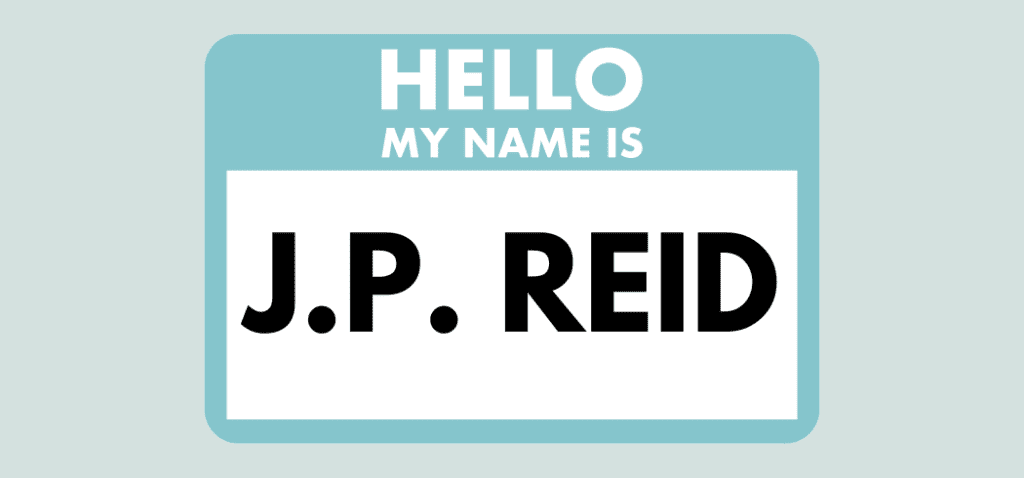Abbreviations are shortened forms of words that follow different guidelines based on your audience and style guide. This post details the specific rules for abbreviation punctuation. Learn how to abbreviate names, titles, addresses, and measurements.
How to Punctuate Abbreviations
Here are the different rules for punctuating abbreviations.
Names and Common Titles

Use one letter and a period when abbreviating names. But if two successive letters are abbreviated, you shouldn’t add spaces between them.
Examples:
- Lovely S. Sanchez
- Susan I. Gilmore
- J.P. Reid
But if the full name is abbreviated, there’s no need to add periods.
Examples:
- JFK (John F. Kennedy).
- MJ (Michael Jordan).
- FDR (Franklin Delano Roosevelt).
If the names or personal titles have junior or senior, abbreviate them and capitalize the first letter.
Examples:
- Robert Downey Sr.
- John F. Kennedy Jr.
Here are other abbreviated titles you’ll encounter:
- Rev. for Reverend.
- Gov. for Governor.
- Prof. for Professor.
- Sen. for Senator
- Rep. for Representative.
There are also French and Spanish abbreviations for some courtesy titles like Monsieur and Señor. Theseare the Spanish counterparts of the English titles Mister and Sir.
Examples:
- M. Hernandez.
- Sr. Gonzales.
Acronyms

Remember that abbreviations, acronyms, and initialisms are under diverse categories of letters. We do not punctuate acronyms and initialism.
Acronyms may represent a phrase, but we pronounce the initial letters as words. Meanwhile, initialisms come from the first letters of phrases, with every letter pronounced.
Examples:
- YMCA
- NASA
- NATO
- NAACP
- NAFTA
- ABC
- FBI
Addresses
When abbreviating a mailing address, the proper period usage is for compass points and words like Ave., Blvd., or St. However, you should only use these punctuated abbreviations with a numbered street address.
Examples:
- 1290 River Ln.
- Addison Street.
- 1600 Pennsylvania Ave.
Never use periods in quadrant abbreviations.
Example:
- NW, SE: 2333 E. Beltline Ave. SE.
Measurements
We don’t usually use periods for measurements and scientific abbreviations. However, time and the United States measurements have periods or dots.
Examples:
- in. for inch.
- oz. for ounce.
- ft. for foot.
- sec. for a second.
- h. or hr. For hour.
Avoid using these unnecessary abbreviations in formal writing. They might make your text hard to read, especially for readers not reading for science or math purposes.
Dates
Punctuation for abbreviations of months, dates, and days is only for informal writing.
Examples:
- Mon.
- Tues.
- Jan.
- Feb.
- Oct.
However, formal writing does not use common abbreviations for these days and months. Therefore, we write Monday, 23 January, 2020, instead of Mon., 23 Jan. Some guidelines also depend on the stylebook you follow.
Clock Time

We also use abbreviations for clock time through capital letters and periods between them. Capital letters without periods or lowercases with periods are also acceptable.
Examples:
- 7:50 A.M.
- 7:50 AM
- 7:50 a.m.
The rule for the punctuation of time is not applicable when the exact time is not attached.
Example:
- Incorrect: Let’s meet in the a.m.
- Correct: Let’s meet in the morning.
Latin Abbreviations
Latin abbreviations perhaps have the most complex abbreviation rules. The big three words you will encounter are etc., e.g., and i.e. Note that these abbreviations have lowercase letters and periods between them.
Use etc. as an abbreviation for the term et cetera, which means and others or and the rest. Use it at the end of the list to show that there are more elements you can add to it.
Example:
- Apples, peaches, chocolates, pies, etc.
Use e.g. to stand for exempli gratia, which means for the sake of an example. Use it to give examples or say for example.
Example:
- I like watching sit-down comedy TV series (e.g., Friends, How I Met Your Mother, Modern Family).
We also use periods in abbreviations between each letter for i.e. This abbreviation literally means that is. You can also translate it as that is to say or what that means is.
Example:
- Our small inn has a promo for tomorrow; i.e., we will offer complimentary breakfast.
B.C. and A.D.
Many style books recommend the use of B.C. and A.D. in small capitals, but you can also use full-sized capitals. We also use full stops in abbreviations for these terms, although informal writing does not add periods.
Example:
- 753 B.C.E.
- 79 A.D.
- 79 AD.
- 753 BCE.
Contractions
Contractions are also abbreviations. But instead of periods, they use an apostrophe to show the omission of letters. For instance, they’ll is a contraction of they will. She’s is a contraction of she and is, with the single letter i being omitted.
Examples:
- Shouldn’t.
- Won’t.
- She’s.
Do You Put Period After Abbreviation?
The American usage of abbreviations recommends a period after an abbreviation. Whether the abbreviations comprise the first two letters of a word or the first and last letter, there’s always a period.
Examples:
- Dr. for doctor.
- Dr. for drive.
But British usage favors standards of titles with the first and last letters not having periods.
Example:
- Dr for doctor
- Mr for mister.
Don’t forget to use capital letters for these professional titles.
Do We Use Colon After Abbreviations?
Use a colon after an abbreviation of two words, like P.M. or i.e. But you should not include a full stop after the abbreviation.
Example:
- Jessa’s routine varies, i.e: sometimes she spends the whole day at home, and other days she goes to the mall.
Do You Put a Second Period After Abbreviation?
You shouldn’t use another period if a sentence ends with an abbreviation that has a full stop.
Example:
- The Cyzicus was founded in 756 B.C.E.
What is the Rule for State Abbreviations?
Whether we use text or block address form, the standard US Postal Service abbreviation always has a ZIP code. USPS format is ideal for the listing of addresses. Use abbreviations for both street addresses and states.
Example:
Kelly Garcia and Karen Moore
1899 E Main St
Riverside CA 92501
Master the Abbreviation Rules
Abbreviation punctuations and capitalizations have different rules, depending on the name and style guide. But the general rule for American English is to use periods for personal titles and only letters for British English.
Take the test below to see if you’ve mastered the abbreviation rules!
